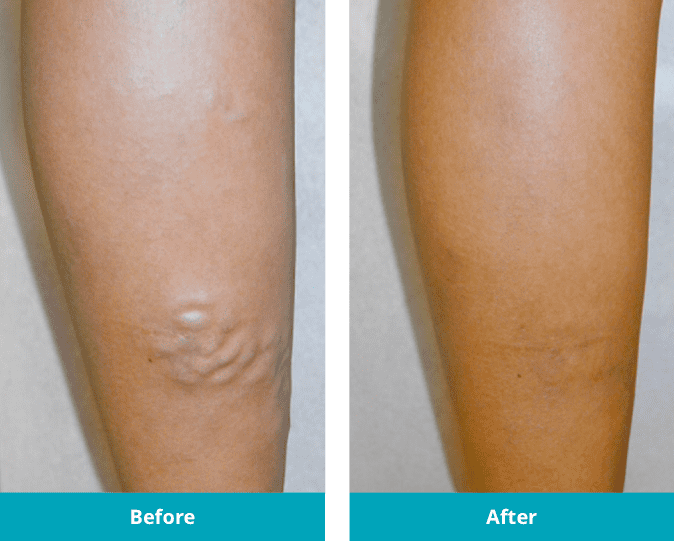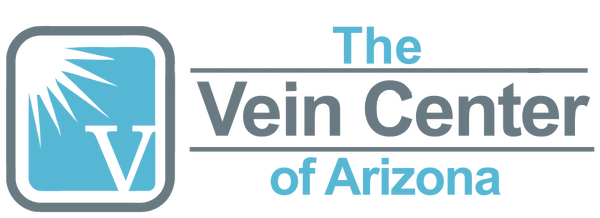Medical Treatment for Vein Disease

 Lower-extremity venous insufficiency is a common medical condition affecting between 45-55% of adult women and 25-35% of adult men. Venous insufficiency typically results from primary valvular incompetence or less commonly from previous deep venous thrombosis. Venous insufficiency can lead to varicose veins that may be of cosmetic concern and cause symptoms such as extremity swelling, pain, skin hyperpigmentation, skin hardening or ulceration. Affected veins may thrombose or bleed.
Lower-extremity venous insufficiency is a common medical condition affecting between 45-55% of adult women and 25-35% of adult men. Venous insufficiency typically results from primary valvular incompetence or less commonly from previous deep venous thrombosis. Venous insufficiency can lead to varicose veins that may be of cosmetic concern and cause symptoms such as extremity swelling, pain, skin hyperpigmentation, skin hardening or ulceration. Affected veins may thrombose or bleed.
Venous insufficiency most commonly results from reflux originating from the great saphenous vein (GSV), anterior accessory saphenous vein (AASV), anterior circumflex saphenous vein (ACSV), posterior accessory saphenous vein (PASV) or posterior circumflex saphenous vein (PCSV) in the thigh. Additional sources of venous insufficiency include the small saphenous vein (SSV), thigh extensions of the small saphenous vein and perforating veins among other rarer anatomical variations.
Treatment of venous insufficiency is intended to alleviate symptoms and reduce the risk of complications. Conventional management of great saphenous vein reflux has been surgical removal of the saphenous vein from the level of the saphenofemoral junction to the level of the knee or ankle (stripping), along with ligation of the saphenous branches in the groin. Since 1999 an alternative to ligation and stripping of the saphenous vein is endovenous ablation of the vein using radio-frequency generated thermal energy, laser energy, or a chemical sclerosing agent. Treatment is aimed at relief of symptoms, prevention of progression of venous insufficiency, prevention of complications and the improvement in the cosmetic appearance associated with venous insufficiency. There are additional methods of ablation being tested in clinical trials that include the use of surgical glue and the use of steam in the ablation.
Physical Exam and History
Venous disease of the legs can be categorized according to the severity, cause, site, and specific abnormality using the CEAP classification. The elements of the CEAP classification are: Clinical severity (Grade 0-6, asymptomatic, symptomatic), Etiology (congenital, primary, secondary), Anatomical distribution (superficial, deep, perforator veins), and Pathophysiological dysfunction (reflux, obstruction).
Noninvasive Diagnosis
Noninvasive studies are used to confirm the presence of venous insufficiency, define the anatomical distribution of venous insufficiency, and identify the presence of venous anomalies and venous thrombosis. Diagnostic ultrasound by a registered vascular technologist (RVT) should be used for initial evaluation and evaluation of treatment adequacy. Real-time US guidance is used during endovenous treatment. Having an experienced technologist is imperative as the initial diagnosis often depends on their ability to assess and show the correct disease state presented.
Compression Stockings
Graduated compression stockings are used to control venous insufficiency symptoms. They provide external support that can constrict dilated veins and restore competence to incompetent valves. Compression stockings are particularly helpful during pregnancy, and they are frequently used following venous ablation. They come in many different styles, sizes and compression ranges. It is beneficial to be fitted by someone who is an expert in compression garments.
Surgery
GSV stripping with branch ligation had historically been the primary treatment option for venous insufficiency. The GSV is ligated near the groin. Ligation alone can preserve the vein for subsequent harvesting in case of arterial bypass; however, ligation alone has proven unsatisfactory for preventing the occurrence of reflux, so it is often supplemented by vein stripping.
Ambulatory phlebectomy is primarily used to treat surface varicose veins. Performed as an adjunct to endovenous ablation or stripping it has also become less common with the advancement of endovenous therapy’s. This procedure involves making tiny punctures or incisions through which the varicose veins are removed. Other surgical methods to treat venous insufficiency have been described, including subfascial endoscopic perforator surgery (SEPS) for treating venous ulcers and valvular surgery for treating reflux caused by incompetent valves of the deep veins.
Injection Sclerotherapy
Injection sclerotherapy is a common treatment for telangiectasias and can be used to treat smaller varicose veins. The sclerotherapy solution can be in liquid form or can be injected as “foam” (mixed with a gas such as air). Sclerotherapy has not been shown to have long-term effectiveness for large veins, such as the GSV unless it is used to treat the distal portions post endovenous ablation. Ultrasound guided sclerotherapy is suggested for larger tributaries and has taken the place of ambulatory phlebectomy in many practices.
Endovenous Ablation
Endovenous ablation is a minimally invasive alternative to surgery. The treatment is done percutaneously and can be used to treat the GSV, SSV, and other superficial veins. A catheter is placed near the sapheno-femoral junction using ultrasound guidance and the length of the treated vein is injected with Tumescent anesthesia to prevent injury to the surrounding tissues. Endovenous ablation uses radio-frequency (RFA) or laser energy (EVLA) applied inside the vein to cause occlusion.
Adjunctive Treatments
Adjunctive treatments may be required to help eliminate venous insufficiency. Patients with venous insufficiency and associated venous occlusion or stenosis of the common iliac vein may require venous re-canalization with angioplasty and stenting to achieve a pathway for venous return. The use of IVUS (intravascular ultrasound) can be used to assess the inside of the pelvic veins. Patients with pelvic venous insufficiency may require percutaneous embolization of the ovarian veins. Patients with deep venous thrombosis are typically treated with anticoagulation to reduce the risk of thrombus propagation, embolization, and post-thrombotic syndrome.
Complications
All forms of lower-extremity venous insufficiency treatment are subject to recurrence. Complications from vein treatment is rare, however they do happen. Risks of vein ligation and stripping surgery include scarring, anesthetic risk, bleeding, pain, deep venous injury or thrombosis, nerve injury, and infection. Complications of the endovenous ablation procedure include bruising, swelling, transient numbness, and very rarely deep venous thrombosis. Thank you for choosing the Vein Center of Arizona.
